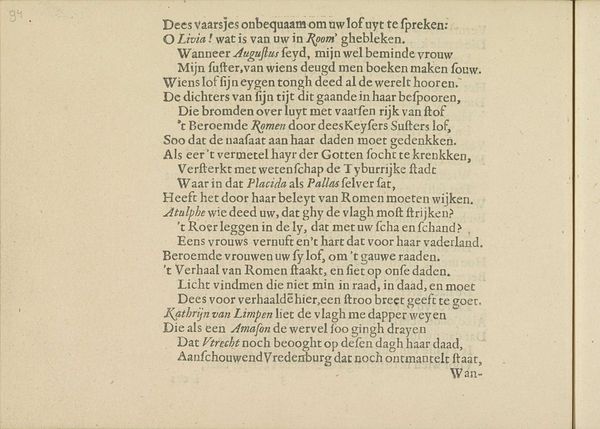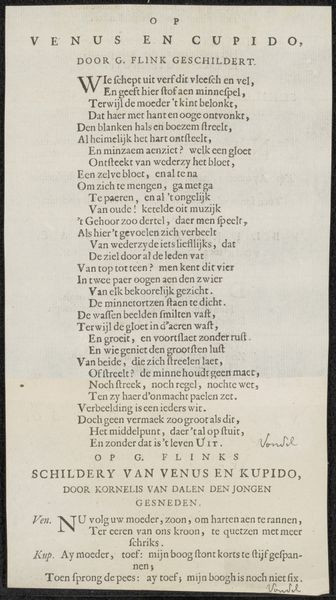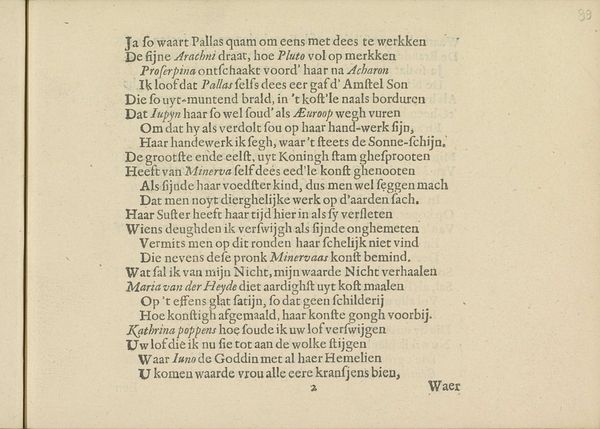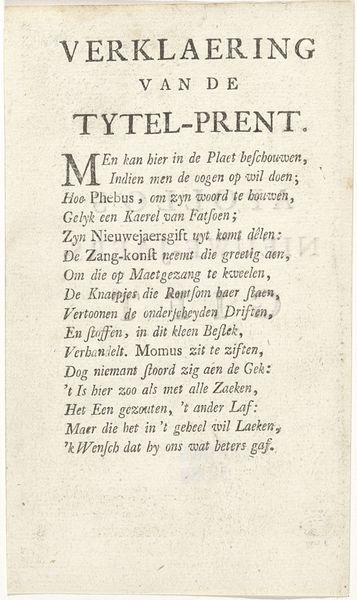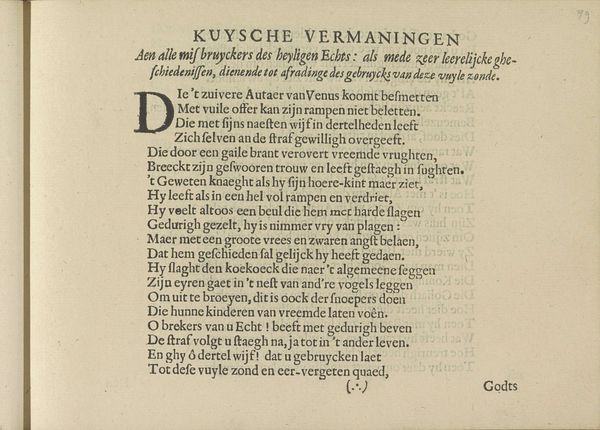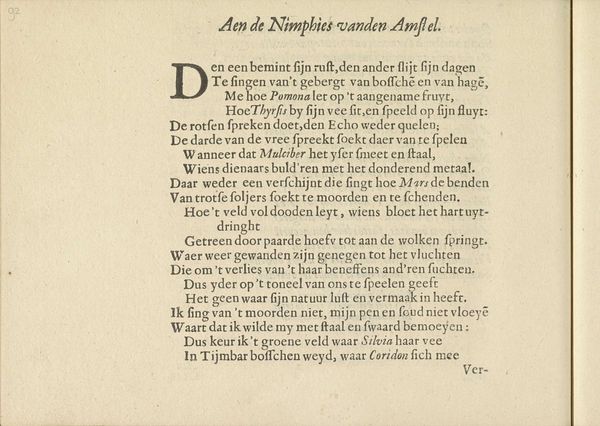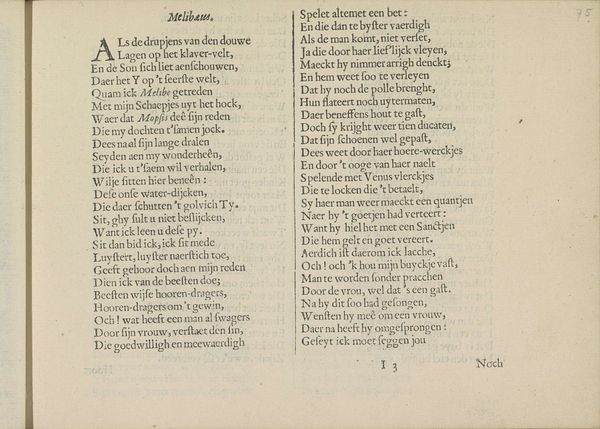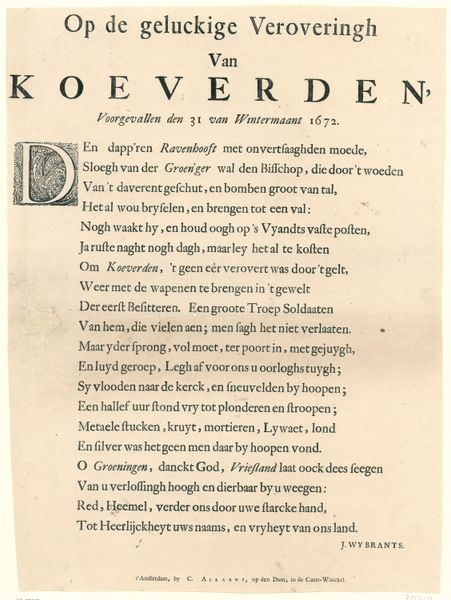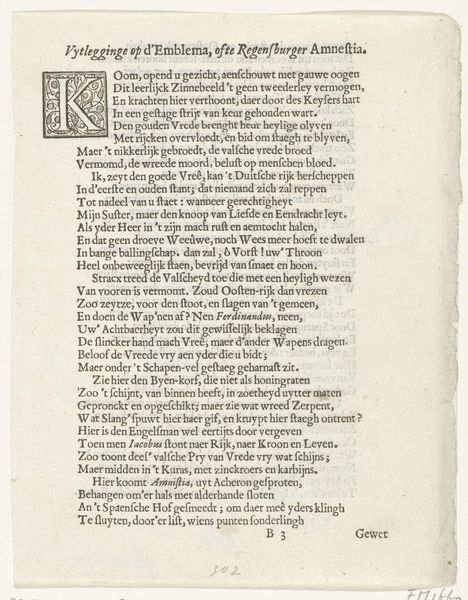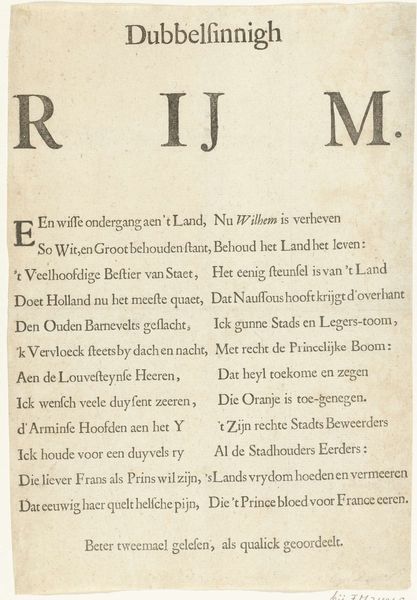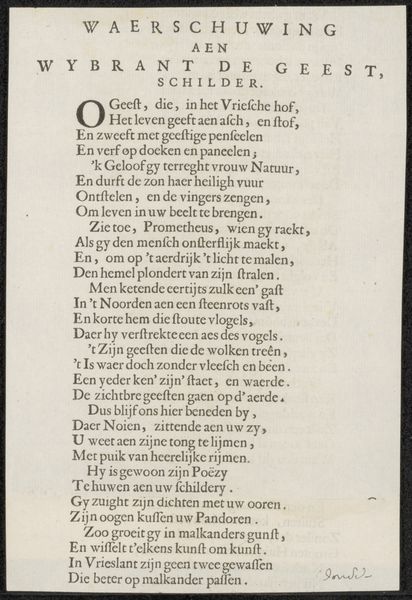
Uitleg bij de prent met de twaalf gedenkpenningen op Willem IV, 1747-1752 1752 - 1753
0:00
0:00
graphic-art, print, etching, textile, paper, typography, engraving
#
graphic-art
#
dutch-golden-age
# print
#
etching
#
textile
#
paper
#
typography
#
engraving
Dimensions: height 218 mm, width 142 mm
Copyright: Rijks Museum: Open Domain
Curator: Here at the Rijksmuseum, we have an etching and engraving from 1752 or '53 entitled "Explanation of the Print with the Twelve Memorial Medals on William IV." Theodorus Crajenschot is credited with its creation. Editor: It strikes me immediately as a very dense and layered work. There's an imposing amount of text, almost overpowering the visual aspect. It appears to be printed on paper, but what function did this paper serve at the time? Curator: As the title indicates, it served as a kind of legend. It elucidated another, larger commemorative print depicting twelve medals celebrating Willem IV, Stadtholder of the Dutch Republic. It translates imagery into digestible narrative, explaining his importance to the Dutch populace during that time. Consider the production—this was a relatively reproducible format to be circulated to shape the public's understanding of the new Stadtholder's power. Editor: And that circulation depended heavily on the printing techniques available then—the etching and engraving you mentioned. The materiality of this work feels significant; it isn’t just information, it’s an object crafted with intent. Each line of text, each carefully placed flourish, speaks to a specific mode of production. How accessible would this piece have been? What was the average citizen’s level of literacy, and to what degree would they rely on word-of-mouth or shared reading experiences? Curator: While literacy rates varied, the strategic placement of these explanations reveals an attempt to engage a broader public beyond the elite. The language used isn't overly ornate; it aims to bridge the gap between the symbols of power and the understanding of the common person. The medals were commissioned for his image and for posterity, but this accompanying print helped make that narrative available and understandable. Editor: So the material accessibility combined with attempts to make the context accessible also speaks to how integral labor and access were to the creation of a national narrative? Curator: Precisely. The print’s role underscores how crucial images and words are in constructing and maintaining national identity. Editor: Reflecting on its social context gives me a newfound appreciation for how actively engaged art was with molding history. Curator: Yes, and understanding the conditions of its making allows us to analyze how national narratives are constructed even today.
Comments
No comments
Be the first to comment and join the conversation on the ultimate creative platform.
